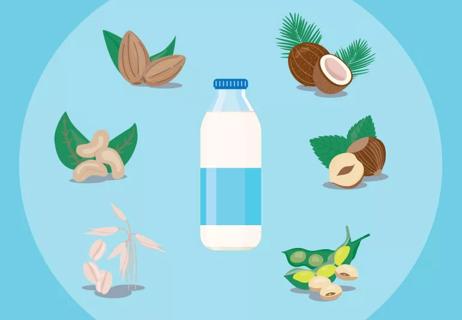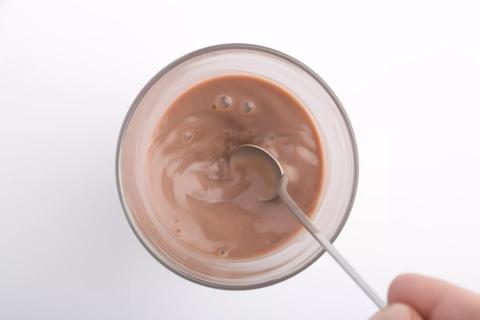But there's one kind of milk you should always be drinking

Research is turning our notions about dietary fat on their ear as new studies show that whole-fat milk may protect us against diabetes. The confusion around this issue with whole milk derives, in part, from an idea that’s been around since the 1970s: “If you eat fat, you’ll get fat.”
Advertisement
Cleveland Clinic is a non-profit academic medical center. Advertising on our site helps support our mission. We do not endorse non-Cleveland Clinic products or services. Policy
Nothing could be further from the truth, though it’s only recently that there’s some agreement about which fats are nourishing, says internal medicine specialist Roxanne B. Sukol, MD, MS.
Beginning a few decades ago, the nutrition field switched from a focus on quality to focusing on quantity, in the form of calories, to assess food value. With fat relatively high in calories, low-fat options like skim milk became staples in the American diet.
At the same time, rates of diabetes and obesity skyrocketed, and people began looking for answers.
There is general agreement that fats in the Mediterranean diet — olives and olive oil, avocados, fatty fish such as salmon, ocean trout and sardines, and nuts and nut butters — are nourishing. What we are working to understand now is which, if any, other fat sources might be beneficial for our health and well-being. This confusion about fats is not just among patients. Many doctors aren’t sure what to think either.
We know a few things about skim milk. Surprising as it seems, farmers know that feeding skim milk to pigs is a reliable strategy for rapid weight gain. This practice dates back to experiments performed at Oregon State Agricultural College in the 1930s — if not earlier — and farmers still follow it today.
Advertisement
Also, have you noticed that today’s skim milk looks different than it did in the 1950’s and 1960’s? When I grew up, skim and even 1% milk looked watery, and kind of bluish. For the record, that is no longer the case. So is some particular processing method making skim milk’s color and consistency more palatable? Does this have anything to do with obesity and diabetes? (If you have the answer, please share it.)
For now, in my mind, decisions about milk’s ideal fat content should take tabled in favor of its source. Organic milk, from grass-fed cows, has a much more favorable nutrient profile than milk from conventional, grain-fed cows.
Not only do grass-fed cows make milk with significantly more beneficial omega-3 fatty acids, but because they are less stressed than conventionally raised cows, they also tend to produce more milk and richer milk.
A study in the journal Circulation demonstrated fewer cases of diabetes in individuals whose blood contained higher levels of three specific fatty acids derived from whole-fat milk:
One separate study reported that intake of whole milk increased HDL cholesterol concentration compared to skimmed milk.
Now what? Would I recommend whole milk? Not yet. We have come a long way in determining whether — and which — fats constitute a reasonable part of a nourishing diet, but we still have far to go.
Though some physicians still advise patients to follow a low-fat diet, many others now recommend a Mediterranean-style diet. Significant disagreement remains about which, if any, other fats are “nourishing,” and the answers are not yet clear.
As the data continue to pour in, it’s important to keep an open mind. There may be more nourishing fats out there that we have not yet identified. Should dairy fat be on the table, to study along with other fats? Absolutely!
Someday, we may even discover that prescriptions for ideal diets depend on various genetic or environmental factors so that, in other words, it comes down to the individual.
I expect we will understand a good deal more in the coming decades.
Although I would not yet recommend whole milk, I would recommend organic milk. From grass-fed cows. With no antibiotics or growth hormones. Especially for our children.
If you enjoy milk and have no idea how to proceed, you might try this experiment: Drink organic whole milk for a month, and then switch to organic skim for a month. Keep a log of your weight and waist measurement.
Advertisement
If you discover that whole milk trims your waist, stabilizes blood sugars, improves your concentration or reduces fatigue, then you’ll probably want to discuss your observations with your doctor.
Advertisement
Learn more about our editorial process.
Advertisement

No single food will increase your milk, but an overall healthy diet will help

Rich in calcium and protein, milk has 18 of 22 essential nutrients that your body needs

Here’s what to consider when you make a trip down the dairy aisle

The short answer from a sports nutrition expert

Milk alternatives aren't good for your child's growth + development

Why water doesn’t work and what to do instead

Many active children don’t consume the recommended amounts

How to help your child build healthy bones

Type 2 diabetes isn’t inevitable with these dietary changes

Applying a hot or cold compress can help with pain